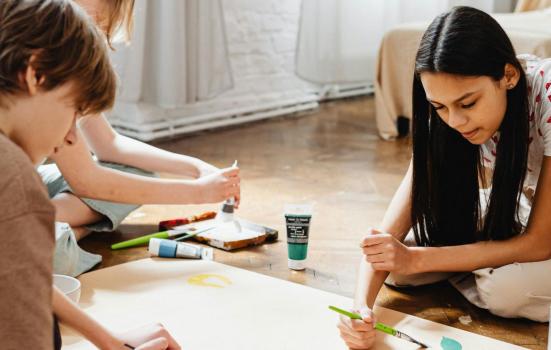Research finds just 2.3% of artists referenced in GCSE art exam papers are from Black or South Asian backgrounds.

Pexels/Karolina Grabowska
Action is needed to improve representation standards in assessment materials for GCSE Art to attract young people from diverse backgrounds to the subject, a report has said.
Research conducted by the Runnymede Trust and Freelands Foundation found only 8.4% of artists referenced in exam papers are from minority ethnic backgrounds, including just 1.5% from Black and 0.7% from South Asian backgrounds.
This was despite students expressing a strong desire for a broader art curriculum, with two-thirds (66%) of secondary school students wanting to study artists from a wider range of ethnic backgrounds, rising to 80% among Black students.
READ MORE:
The study found that, despite teachers wanting to improve art education experiences for all, they often "lack the confidence or resources" to diversify the content they teach.
A third of teachers said they had never encountered the work of any minority ethnic artists in their own education, and 90% said supplementary teaching resources dedicated to the work of minority ethnic artists would aid their teaching.
The report makes a series of recommendations to address the issues. It says exam boards should establish standards for inclusion and diversity in GCSE assessment materials, improve access to teacher and curriculum resources that support a broad and diverse curriculum, and improve teachers' racial literacy and curriculum development skills.
Meanwhile, education policymakers should investigate low levels of engagement in art lessons and extracurricular enrichment activities offered by schools and improve the data landscape around art education across all levels of education.
The report also calls on the broader cultural sector to improve partnerships between galleries and schools, with specific attention to diversity and representation.
In light of the findings, two of the four exam boards offering Art GCSE - Pearson and Eduqas - have committed to a minimum target of 25% representation of minority ethnic artists in exam papers by next year.
'Fundamental inadequacies'
Dr Henry Ward, Director of the Freelands Foundation, said: “Whilst this report makes for a sobering read, there are clear actions we can and must now take to repair the fundamental inadequacies it highlights in art education.
"There are no quick fixes here, but there are things we can begin to address today: the immediate commitment of both Pearson and Eduqas to the recommendation of increased diversity of artists named in their examination papers is heartening, and I hope that the other examination boards AQA and OCR can now follow their lead.
"Contemporary artists come from, and represent an increasingly diverse society, and we must all play our part to ensure that art education reflects this, in both the resources we share and the people that participate.”




